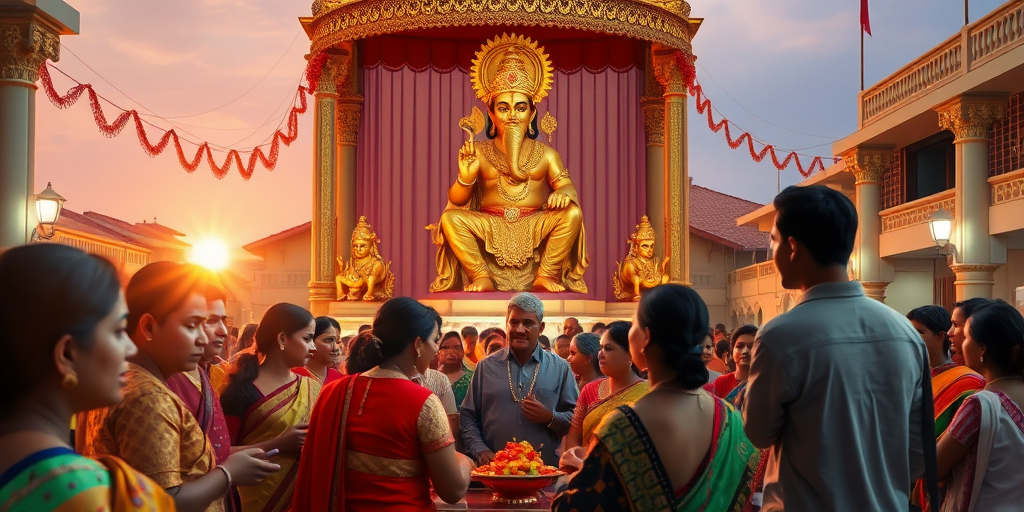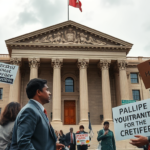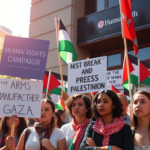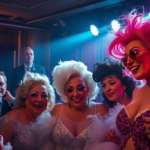‘These Are Neighbors’: Union Corridor Highlights Religious Diversity of Houston’s Southwest Suburbs
In the heart of Houston’s southwest suburbs, a 0.7-mile stretch known as the Union Corridor is a vivid tapestry of religious diversity, where places of worship stand side by side as testaments to interfaith harmony. From temples and a church to a masjid, this corridor not only mirrors the founding values of the United States but also enriches the local community with its unique blend of cultures and beliefs, say local leaders.
A Microcosm of Religious Tolerance
At the Sri Ashtalakshmi Temple in Sugar Land, part of the Union Corridor, a recent Dussehra celebration drew attendees who rejoiced in practicing cultural and religious traditions miles away from their homelands. “Being able to experience what we had since childhood in a place so far from home is truly satisfying,” shared Aparna Kaliyur, a participant at the event.
The corridor also hosts significant religious sites like the Hindu temple by the International Swaminarayan Satsang Organization and the Vietnam Buddhist Center, renowned for its impressive 72-foot statue of Quan Am. This blend of religious sites is set against a backdrop of predominately Christian residents, making the Houston area one of the most religiously diverse in the nation.
Forging Interfaith Bonds
The Union Corridor embodies a tradition of interfaith collaboration in Houston, underscored by initiatives such as the “Three Amigos” coalition of religious leaders advocating for civil rights. Kerby Goff, Associate Director of Research at Rice University’s Boniuk Institute for the Study and Advancement of Religious Tolerance, emphasizes the area’s significance. “This tradition has set the stage for religious communities to work together, fostering mutual respect and understanding,” Goff stated.
Promoted by Fort Bend County Commissioner Andy Meyers and City Council member Tiffany Thomas, the “Union Corridor” concept is envisioned as a melting pot, reflective of the broader diversity of the nation. “This is the United States, a melting pot of various nationalities and religions,” Meyers said. “Union Corridor is just a microcosm of that.”
Joys and Challenges
Despite its overarching atmosphere of harmony, the Union Corridor has its share of tensions. Legal actions, such as the lawsuit against the Sri Ashtalakshmi Temple over a ceremonial branding incident, highlight the challenges of maintaining religious freedom and understanding in a diverse community. Additionally, the temple’s statue of Hanuman has faced backlash, prompting heightened security and igniting debates on religious representation.
Nevertheless, local leaders stress the importance of dialogue and education in overcoming these hurdles. Vijay Sreenarasimhaiah, a volunteer at the Sri Ashtalakshmi Temple, speaks to the broader message. “Hanuman’s message is about unity despite differences. It aligns with the values outlined in the U.S. Constitution and embodies what makes America unique.”
Community Empowerment
For many residents, this diversity is an asset that strengthens communal bonds. Linda Tu from the Vietnam Buddhist Center emphasizes collective support. “We share parking lots and collaborate on community events. Serving people is a common purpose that transcends religious boundaries,” Tu explained.
Local real estate agent, Jose Martinez, recognizes the economic potential of this diversity. “Houston’s multi-faith environment makes our market more attractive, not just locally but on a broader scale, thus spurring economic development,” he noted.
Future Prospects
Looking ahead, the Union Corridor could set a precedent for other communities striving for inclusivity and diversity. However, the success of this endeavor depends on ongoing dialogue, mutual respect, and strategic planning. Balancing interests while ensuring that the benefits of diversity reach all community members remains a priority.
Houston’s Union Corridor stands as a beacon of interfaith unity, reflecting both the complexities and colorfulness of a religiously diverse society. As civic leaders and residents work together, the corridor’s evolution will continue to unfold, symbolizing the resilience and richness of the American melting pot.
For more information and community resources related to the Union Corridor and its diverse places of worship, residents are encouraged to attend local town hall meetings or reach out to the Houston Public Media center for additional support and dialogue opportunities.







